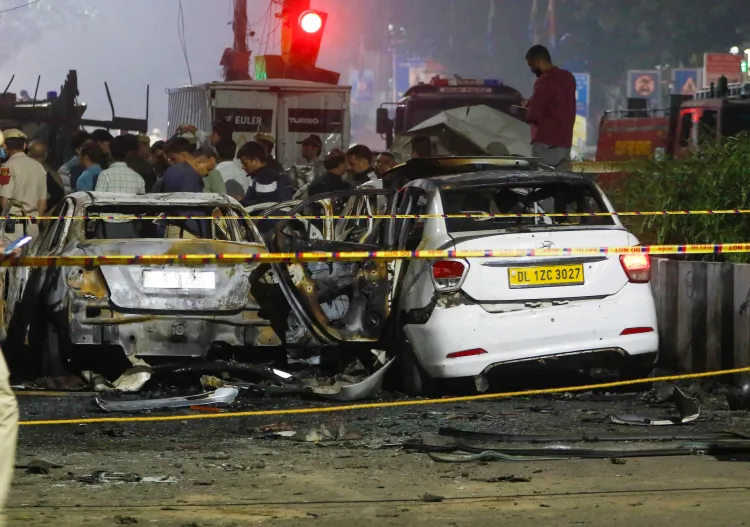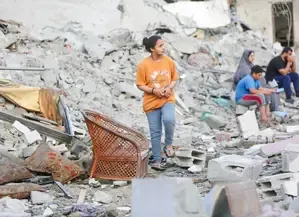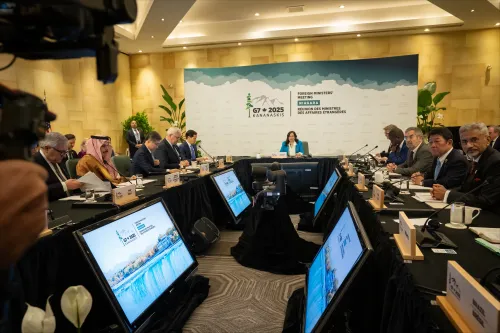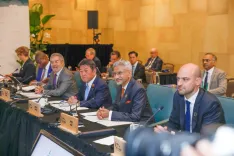Why Did JeM's 'Doctor Module' Select Delhi for Its Comeback?

Synopsis
Key Takeaways
- Delhi was the first target for the Faridabad module to send a message.
- The group had been planning the attack for several months.
- Radicalization efforts were focused on educated individuals.
- Intelligence agencies are tracking vehicles used in the attacks.
- The initial attack plan was abandoned due to security concerns.
New Delhi, Nov 12 (NationPress) Investigators examining the Delhi blast incident have discovered that the Faridabad module had intentions of executing multiple blasts nationwide, with Delhi being their primary target.
The Jaish-e-Mohammad (JeM) affiliated Faridabad module aimed to deliver a powerful message to security forces by selecting Delhi as their initial target.
This terrorist organization sought to make a significant statement and demonstrate their capability to strike within the nation's capital.
Intelligence agencies indicated that such attacks bolster a terror group's strength, serving as a vital recruitment strategy.
Although the attack resulted in eight fatalities, the group did not plan for such a casualty count.
The bomber was likely instructed to crash the bomb-laden vehicle into the Red Fort. However, upon the disruption of the Faridabad module, he panicked and detonated the explosives amidst traffic, an official remarked.
Investigations revealed that this attack was meticulously orchestrated.
Planning likely spanned over the previous four to five months.
However, this module did not emerge suddenly; the radicalization of its members had been an ongoing process.
The radicalization efforts were not centered in Jammu and Kashmir. Instead, they specifically targeted individuals from Uttar Pradesh, a deliberate tactic given the heightened security scrutiny in Jammu and Kashmir.
Further inquiries disclosed that the assailants maintained communication with their Afghanistan-based controllers, who are part of the JeM cells active in Afghanistan since 2021.
The JeM adopted a distinct strategy with this module, recruiting highly educated individuals to execute terror attacks. This choice stems from the lower surveillance focus on such individuals, especially doctors.
Dr. Shaheen Saeed, apprehended for her involvement in this module, frequently traveled to Jammu and Kashmir. During her visits, she met with Maulvi Irfan Ahmed on several occasions, facilitating the recruitment of other module members.
She leveraged her profession to evade detection by security agencies.
Moreover, JeM preferred intelligent members for this module, as their ability to remain undetected enhances their contribution.
Educated individuals tasked with radicalization possess strong persuasive skills, which significantly aids recruitment efforts, an official highlighted.
Officials from the Intelligence Bureau stated that it is evident this module aimed to strike major urban centers.
However, they prioritized Delhi first to not only convey a message but also to induce fear.
Meanwhile, investigative agencies are actively searching for additional vehicles acquired by the accused.
The police emphasize the necessity of tracking these vehicles, as they were evidently obtained to facilitate similar vehicle-based explosions across the country.
Additionally, during the investigation, it was discovered that the initial plan involved executing a bomb attack during Diwali. However, this plan was abandoned due to heightened security measures, an official revealed.
Currently, investigators suspect that after the cancellation of the Diwali plan, the accused intended to launch an attack on the Red Fort on January 26. Nevertheless, following the disruption of the Faridabad module, the bomber, Umar Nabi, panicked and prematurely detonated the vehicle.









